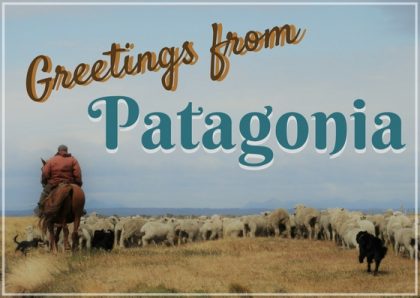
Shorebirds were the reason for our trip to Tierra del Fuego, in the southern-most reaches of Patagonia, but I focus here on vignettes of cultural and natural history that were part of the experience.
Red knots share the shoreline with birds that are rarely seen in North American waters, for example, seabirds like giant petrel and black-browed albatross, a wide array of waterfowl including the flightless steamer duck and…penguins!
We saw magellanic penguins swimming among dolphins and seals in the Straits of Magellan, and in just the last few years, a king penguin colony has formed on the shores of Useless Bay on mainland Tierra del Fuego.
The penguins are unfortunately troubled by introduced foxes from mainland South America and introduced mink from North America. I am guessing the mink were introduced for their fur-trapping potential. Likewise beaver were introduced from North America. They are leaving a regrettable mark on the landscape wherever trees occupy the lowlands.
We had brief glimpses of dolphins, whales and seals during ferry trips to and from the island, but the most impressive marine mammal sightings were the skeletal remains of whales along the shore of Bahia Lomas.
Images of the native people of the region, such as this Selk’nam (Ona) woman were often seen hanging in restaurant and hotel lobbies. The native people were also commemorated with statues in the towns and cities.
I am reading the memoir of Lucas Bridges, who lived in Tierra del Fuego when it was a wild frontier in the late 1800s. He spent most of his life living and working with the native Ona and Yaghan people and learned much about their language and culture. His book, The Uttermost Part of the Earth, is a fascinating read for anyone interested in native people, whether you plan to visit Patagonia or not.
It seems that remarkably very little has changed in this landscape since the late 1800s when this land was first settled by Europeans.
In fact many of the original farm structures are still standing. They were the headquarters of the sheep ranches established by European colonists. The ranches are still there, along with plenty of sheep.
We saw sheep dogs and herders, mounted on horseback with chaps made of guanaco fur.
The guanaco, too, seem to thrive. We saw them everywhere from tidal mud flats to mountain tops. They leap over the fences meant for their range-mates the sheep.
The old farm buildings seem mostly vacant. I imagine the ranch owners now live far off in larger towns. The ranches are still off the grid, without electricity.
Occasionally there were small trailer homes parked next to some of the houses where I am guessing caretakers lived.
There might be less people living in Tierra del Fuego now than in the past. The town where we stayed, Cerro Sombrero, was built all at once in 1958 as a company town for the state oil company.
Although the town is listed as a historic landmark for its mid-century modern architecture, it is crumbling. There are no longer many families living here. Like ranching, the oil business is now more portable. Our observation was that the oil industry (fracking) is now run by transient bachelors.
In the south of Tierra del Fuego, the rolling grassland hills become tree-covered, glacier-capped mountains among boggy valleys.
Only a handful of tree species grow in this region, primarily Nothofagus species (southern beech). Unfortunately for the trees, their wood is useful and valuable.
But fortunately 728,960 acres of forested wilderness, including the largest stands of old growth forest in the southern hemisphere, was recently protected as part of a private reserve (Karukinka) that is joint venture between Goldman Sachs and the Wildlife Conservation Society.
The history of the park is difficult to find on the web but the park is the product of a failed bid by a Canadian timber company to acquire and log the land. According to this news article, the park is only visited by 400 people a year,
Despite this low count for park visitors, we saw tourists everywhere. They trundled in rolling clubhouse buses with sleeping berths and on board kitchens, toured on motorcycles, bicycles and various funky camper vans. Many of the vans had web and Instagram links, inviting us to follow along on the journey.
Why are people are drawn to Tierra del Fuego?
It is a simple and subtle landscape, but perhaps the draw is its absolute remoteness and relative timelessness and wildness.
Hopefully the economic impact of ecotourism helps the island continue to retain these characteristics.